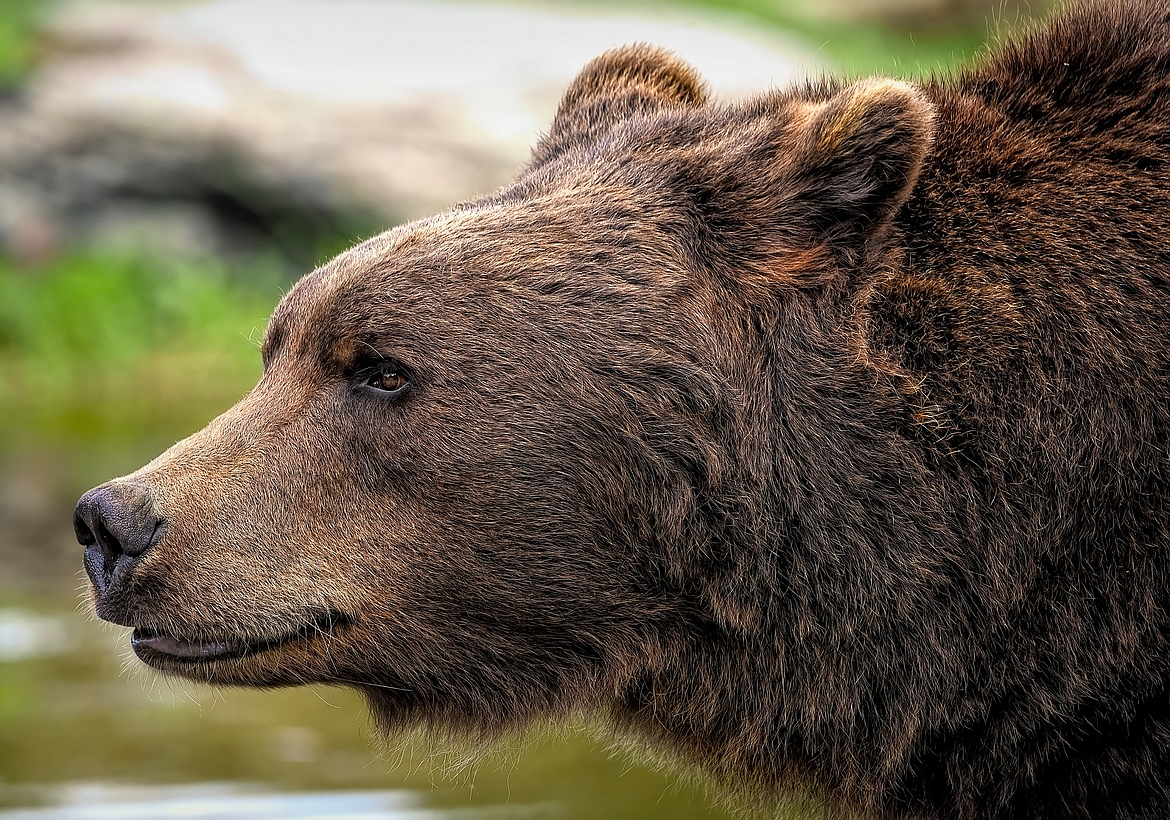Grizzly bear conflict calls were down this year, despite a few notable conflicts
Despite several high profile run-ins with bears in 2023, the overall number of grizzly mortalities and conflict calls per bear in the area was lower than in previous years, experts say.
“We have a whole lot of people working with a whole lot of agencies and [non-governmental organizations] that are really trying hard to make it possible for people and grizzly bears to live together,” said Cecily Costello, a research wildlife biologist with Montana Fish, Wildlife and Parks. “I think that celebrating the work that they do to make that possible is important.”
There are two conflict specialists that divide up the area of the Northern Continental Divide Ecosystem that includes the Flathead Valley. The northern territory, which encompasses Eureka, Whitefish, West Glacier and Columbia Falls, saw 11 grizzly mortalities this year to date, an increase from last year’s total of 7.
The southern stretch, which includes Kalispell, Marion, Bigfork, Swan Lake and Condon, saw just two, compared to six in 2022.
But taken together, the number of overall calls and conflicts decreased this year, given that the grizzly population increases annually, experts said.
The lower number of conflict calls can be attributed to a good natural food harvest as well as effective management, Costello said.
The northern territory, north of Montana 40, saw six bears euthanized, two hit by trains and three shot in self defense, according to Justine Vallieres, a wildlife management specialist for Fish, Wildlife and Parks.
“I’m really trying my best to continue to do preventative work and conflict mitigation through education,” she said. “I don’t take [the removal of bears] lightly at all.”
Most conflicts arise when bears become food conditioned in residential areas. For example, a generational-taught family of bears had to be removed after repeated conflict calls this year around Eureka, as well as calls in 2014, 2016 and 2022.
Given the extent of their history, relocation was not an option, Vallieres said. The female sow and one cub were euthanized. Two other cubs were sent to ZooMontana.
“The generational teachings of these behaviors, you know, are important to address. If [a cub] goes on to grow up and have cubs and teaches her cubs these things, there will be more conflict,” Vallieres said. “In the long run, if I have to remove a bear that is doing these things, I end up conserving more bears.”
Another female grizzly was removed in Glacier National Park in July after intruding on campgrounds, the first time since 2009 that officials had to euthanize a food-conditioned bear inside the park.
The remainder of the bears that were removed by Fish, Wildlife and Parks were also conflict bears, Vallieres said.
ERIK WENUM, another bear specialist for the state wildlife agency, saw only two mortalities south of Montana 40 this year. The first was a male grizzly who went on a “rampage,” Wenum said, near the Hungry Horse Reservoir in July. The bear was active during daylight hours, in the presence of people, and destroyed boats, tubes and campgrounds.
The bear just didn’t seem to care about human activity, he said.
“There were not many options for him. Again, you come down to that unfortunate decision you have to make,” Wenum said.
Officials determined the bear was food conditioned and habituated to people. The decision was made to euthanize it after consulting with the U.S. Fish and Wildlife Service and Interagency Grizzly Bear Committee guidelines.
The other mortality in the territory is currently under investigation. It was either a mistake in identification or an intentional killing, Wenum said.
“The biggest difference [between the north and south regions] is sort of a generational issue,” he said. “Justine had a lot of family groups, where the adult female, through time, had learned that people and people activity centers are where you go to find easy food.”
When bears are conditioned in that way, wildlife officials are often left with limited options, both Vallieres and Wenum said.
The most interesting find of the year, according to Wenum, was a family of grizzlies who stayed just east of Kalispell for 145 days with zero conflict calls or human interactions.
The three grizzlies, a mom and two cubs, lived near the Otter Island Area of Owen Sowerwine Natural Area. The two cubs were born this year.
“She generated zero phone calls about management issues, which goes to show you that bears are very able to live in close proximity to people and not get a single call,” Wenum said.
THE STATISTICS were discussed at a recent Northern Continental Divide Ecosystem subcommittee meeting in Polson, where the big takeaway was the importance of educating the public on coexisting with bears.
Bears don’t know city or town boundaries, Vallieres said, so it's important for people to take initiative to secure possible attractants. The best way to manage bears in the wildland-urban interface is to be proactive, not reactive, she said.
Electric fences are effective in securing an area, Vallieres said. It is also important to secure trash and attractants within structures and utilize bear-proof mechanisms.
The Flathead Valley is surrounded by grizzlies, Costello said. There's a lot of areas within the valley that bears will assume are suitable habitat for them. Montanans need to do more to make the communities in the valley more bear resistant, she said.
“Everybody talks about arming themselves and most people think about arming themselves with a handgun or pepper spray. But the arming I'm talking about is information,” Wenum said.
There are roughly 1,200 bears in the Northern Continental Divide Ecosystem, which spans 6.5 million acres. A few years ago there were only 500, according to Wenum. It is one of two grizzly populations in the state, the other in the greater Yellowstone area.
Reporter Kate Heston can be reached at kheston@dailyinterlake.com or 758-4459.


